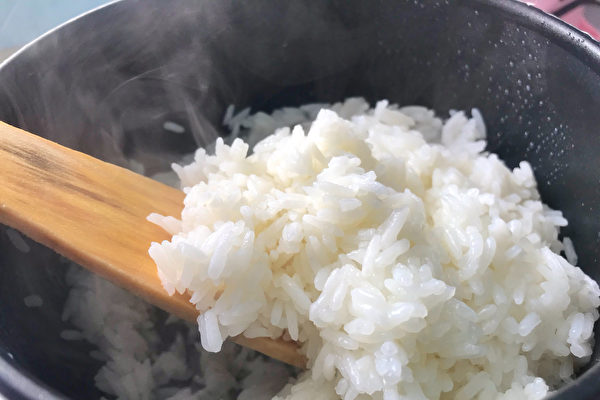Dr. Achi provided
Editor’s note:
Rice is the staple food of Chinese people, but not everyone can cook delicious white rice. Addressing common cooking doubts, such as: why does the rice turn into a sticky mess? Why is the outside of the rice mushy while the core remains hard? Why does the rice easily stick to the pot? This article analyzes the golden ratio of water to rice, and the four key points of washing rice, soaking rice, simmering, and stirring to reveal the scientific principles behind cooking rice that is distinct in texture and fragrant.
Firstly, let’s talk about the types of rice. The rice sold on the market generally falls into two categories: round and glutinous like glutinous rice, or long-grain like Thai fragrant rice. The type commonly eaten by Chinese people is japonica rice. The longer the rice, the more amylose it contains; amylose molecules are linear and can stick together, resulting in a denser texture and a harder grain. On the other hand, round rice contains more amylopectin, which has a branching structure similar to a net, making the cooked rice stickier and more elastic.
Different countries prefer different types of rice. For example, most Chinese or Japanese people prefer shorter grains, while people in Southeast Asia or Iran enjoy longer grains. Focusing on the white rice consumed by Chinese or Japanese people, this article discusses the four key cooking tips from a scientific perspective:
Many people believe that the cleaner the rice is washed, the better. It is best to wash the rice until the water is clear.
Rice is exposed to air for a long time, and the outer layer may contain some oil or starch. Remember to wash the rice thoroughly to remove the outer residue and quickly remove the washing water. During the washing process, water-soluble starch is also released, causing the water to appear cloudy. If you prefer rice that is not clumpy, washing the rice thoroughly will result in a crystal-clear, distinct grain texture.
After washing the rice, it is advisable to soak it for thirty minutes before cooking for better taste.
If you are using a rice cooker with electronic programming, the soaking time is already factored in and the cooking process will start after thirty minutes. However, in Taiwan, where many people cook rice using traditional rice cookers, the soaking step is often neglected.
A significant percentage of rice consists of starch crystals, which do not easily absorb water. If rice is cooked without soaking, when it reaches a temperature of around 60-70 degrees Celsius, the starch granules will begin to gelatinize, resulting in a hard outer shell where water cannot penetrate, leaving the core of the rice very hard, with a semi-cooked texture similar to Spanish seafood rice.
Moreover, people often use a 1:1 ratio or more of water to rice when cooking. In such cases, the water cannot penetrate the core of the rice, resulting in the outer layer being mushy and the inside hard, which is not very appetizing.
Additionally, how much water should be added to cook rice so it is not too hard and more flavorful?
For longer grains of rice, more water should be added, with a ratio of about 1:1.4 water to rice, while for round grains, the ratio is approximately 1:1. The golden ratio for japonica rice is around 1:1.2. Since many people do not completely drain the wash water when washing rice, Taiwanese people, who often eat japonica rice, tend to add a 1:1 ratio of water, resulting in a ratio of about 1:1.2.
Furthermore, if the rice is older, it requires a little more water. New rice can be cooked with a 1:1 ratio, but if the rice has been stored for two to three years, a slightly higher water content is recommended to prevent it from becoming too hard.
After washing and soaking the rice,
regardless of the cooking method, let the rice simmer for five to ten minutes after it is cooked.
Most people use rice cookers, electronic cookers, or rice cookers which use steam condensation to cook rice. In this process, there is a rapid release of heat when steam turns into water droplets, which is absorbed by the rice when the steam condenses. If you open the rice cooker immediately after it switches off, the rice is likely to be slightly hard.
After simmering the rice for five to ten minutes, remember to stir it.
The cooking water contains water-soluble starch, which turns into a sticky paste after cooking, causing the rice to clump together and have a poor texture. By stirring the rice after cooking, the paste will adhere to the surface of each grain, and by utilizing the remaining heat in the pot, the rice grains will be distinct and not stick together, resulting in a more elastic texture when eaten.
Reminder: when stirring, ensure to reach the bottom of the pot, fluffing up all the rice. Continue to simmer for another five to ten minutes before serving.
Additionally, there are two advantages to preventing the rice grains from sticking together:
Firstly, increasing the surface area of the rice. When rice grains are clumped together, the aroma is not as pronounced compared to when the grains are loose, making it easier to appreciate the fragrance of the rice.
Secondly, it prevents sticking to the pot. Many Taiwanese students studying in the United States complain about rice sticking to the pot. After cooking, a quick stir will prevent the rice from sticking to the bottom of the pot, resulting in a more enjoyable meal that is also easier to clean.
◎

